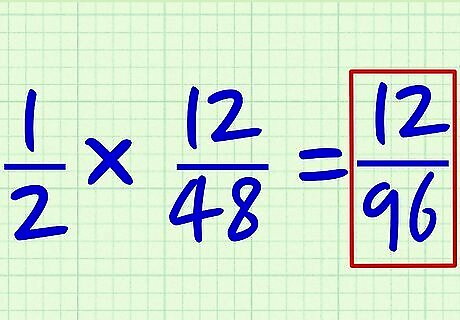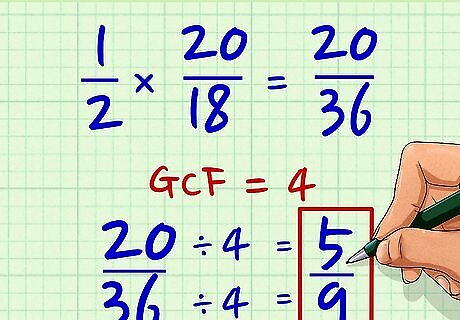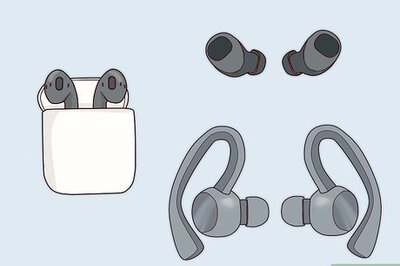
views
Multiplying Fractions

Multiply the numerators of the fractions. The numerator is the number on the top of a fraction and the denominator is the number on the bottom. The first step to multiplying fractions is to line them up so that their numerators and denominators are next to each other. If you're multiplying the fraction 1/2 by 12/48, then the first thing you want to do is multiply the numerators, 1 and 12. 1 x 12 = 12. Write the product, 12, in the numerator of the answer.

Multiply the denominators of the fractions. Now, you'll just have to do the same thing with the denominators. Multiply 2 and 48 to find the new denominator. 2 x 48 = 96. Write this answer in the denominator of the new fraction. Therefore, the new fraction is 12/96.

Simplify the fraction. The last step is to simplify the result if it can be done. To simplify a fraction, you have to find the greatest common factor (GCF) of both the numerator and the denominator. The GCF is the largest number that can be evenly divided into both numbers. In the case of 12 and 96, 12 happens to evenly divide into 96. So, divide 12 by 12 to get 1, and divide 96 by 12 to get 8. Therefore, 12/96 ÷ 12/12 = 1/8. If both numbers are even, you can also start by dividing them both by 2 and keep going. 12/96 ÷ 2/2 = 6/48 ÷ 2/2 = 3/24. Then you may notice that 3 goes evenly into 24, so you can divide both the numerator and denominator by 3 to get 1/8. 3/24 ÷ 3/3 = 1/8. EXPERT TIP Joseph Meyer Joseph Meyer Math Teacher Joseph Meyer is a High School Math Teacher based in Pittsburgh, Pennsylvania. He is an educator at City Charter High School, where he has been teaching for over 7 years. Joseph is also the founder of Sandbox Math, an online learning community dedicated to helping students succeed in Algebra. His site is set apart by its focus on fostering genuine comprehension through step-by-step understanding (instead of just getting the correct final answer), enabling learners to identify and overcome misunderstandings and confidently take on any test they face. He received his MA in Physics from Case Western Reserve University and his BA in Physics from Baldwin Wallace University. Joseph Meyer Joseph Meyer Math Teacher Simplifying a fraction just changes the way the fraction is written. To simplify a fraction, you can cancel out the greatest common factor from the numerator and denominator or convert an improper fraction to a mixed number. This doesn't change the inherent value of the fraction.
Dividing Fractions

Reverse the numerator and denominator of the second fraction and change the division sign to a multiplication sign. Let's say you're dividing the fraction 1/2 by 18/20. Now, find the reciprocal of 18/20 which is 20/18 and change the division sign to a multiplication sign. So, 1/2 ÷ 18/20 = 1/2 x 20/18.

Multiply the numerators and denominators of the fractions and simplify your answer. Now, do the same thing you would do to multiply. If you multiply the numerators, 1 and 20, you get the result of 20 in the numerator. If you multiply the denominators, 2 and 18, you get 36 in the numerator. The product of the fractions is 20/36. 4 is the largest number that is evenly divisible by both the numerator and the denominator of this fraction, so divide each by 4 to get the simplified answer. 20/36 ÷ 4/4 = 5/9.



















Comments
0 comment